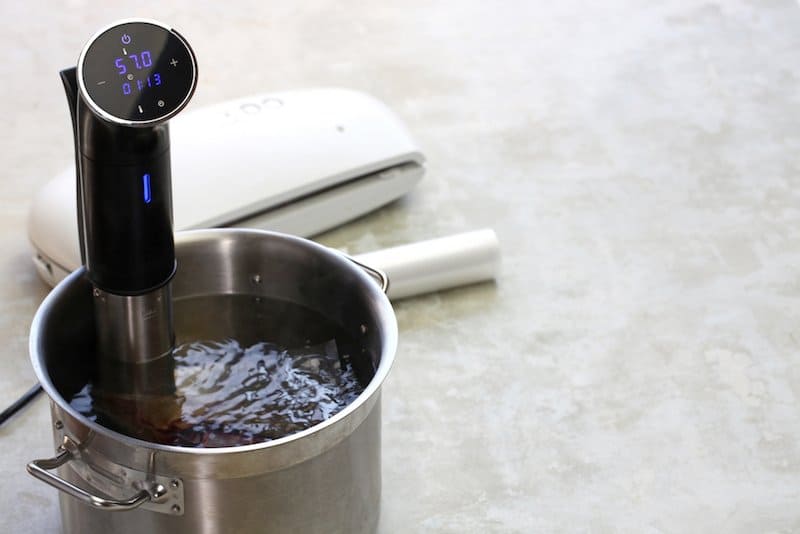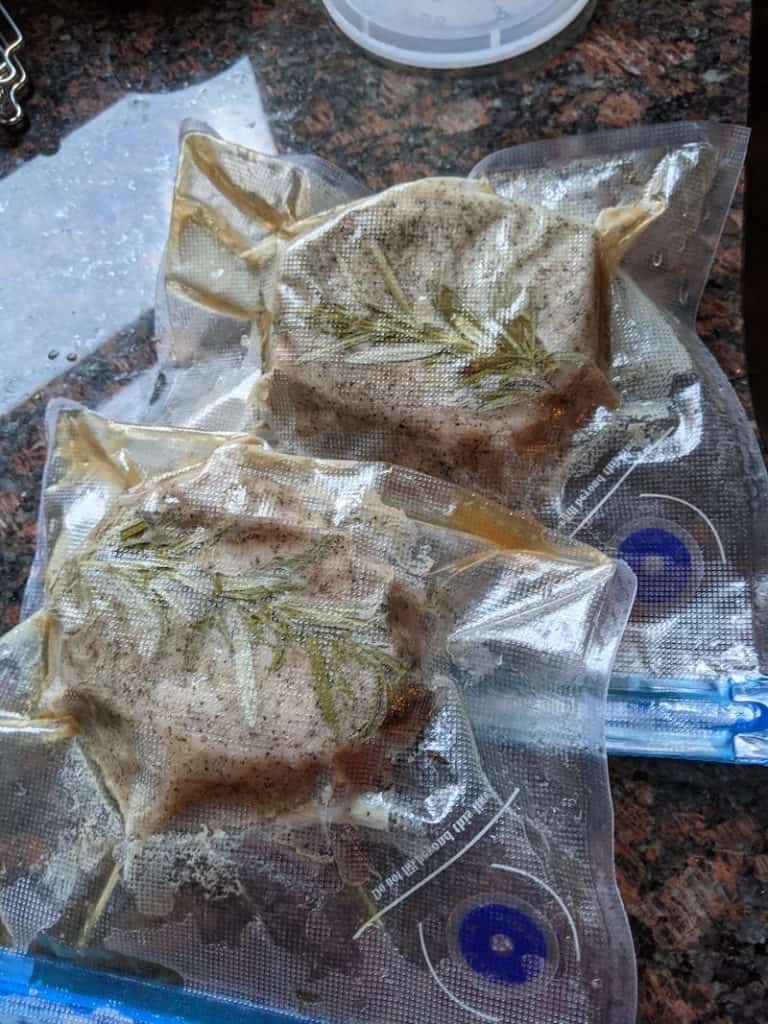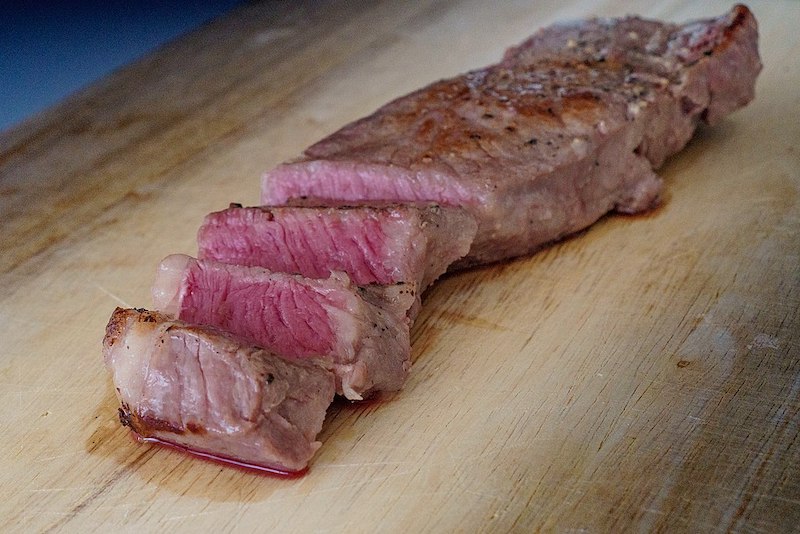Sous Vide Advantages and Disadvantages
The sous vide cooking method uses a device to prepare food in a water bath over a more extended period. Such dishes are more flavorful and tend to melt in your mouth.
Although the technique was initially developed to help chefs cook more efficiently, with the advent of the sous vide immersion circulator, more amateur cooks are taking advantage of it.
If you’re a foodie, maybe you’ve heard fellow food enthusiasts talk about sous vide. Because the food is cooked in very controlled conditions, this method can sound intimidating.
But before you ditch the idea of trying out this technique, it’s worth learning about sous vide advantages and disadvantages.
In this article, I’ll talk more about why you might consider incorporating sous vide in your home cooking and why this option might not be right for you.

What are the Advantages of Sous Vide Cooking?
If chefs worldwide, including Jamie Oliver and Gordon Ramsey, are raving about sous vide cooking, that should mean something.
There are so many advantages of sous vide you should read about if you’re a foodie. Let’s explore them.
There’s No Need to Stand by the Stove
No matter how much you like cooking, life can get in the way. Whether you have to finish a work project or take your children to a birthday party, homemade cooking can sometimes be impossible.
Instead of ordering takeout that’s usually not nutritious, consider sous vide cooking.
With this method, there’s no need to stand by the stove. You can prepare everything and leave the dish to cook on its own.
You don’t have to worry about starting sous vide then finishing it later if you don’t have the time.
It’s such a convenient option, as you can read a book, do your chores, or play with the children while the meal is cooking.

Food is More Flavorful
Boiling or frying food may cause it to lose texture, color, flavor, or nutritional value. The aim of sous vide cooking is to retain the natural aromas of every dish.
This slow-cooking method will help you make tender pork, steak, chicken, ribs, or even vegetables with an enhanced taste.
Even if you prepare the dish in advance, you don’t have to worry about it tasting bland or lacking crispness.
It’s Almost Impossible to Overcook Food
Because the food in the sous vide bag is being brought to the exact temperature of the water, and no hotter, it’s nearly impossible to overcook food with sous vide.
The lower temperatures of sous vide also help to prevent this from happening – click here to read more.
Dishes Are Healthier
High-temperature cooking often kills nutrients in meat and vegetables. It also tends to eliminate most of the healthy fat from the meat. But that’s not the case with sous vide cooking.
With this method, food sits in a water bath for a long time. There’s no need to use oils or butter that can oxidize at high temperatures and be harmful and also add unneeded fat to your meal.
When food is prepared with sous vide, it retains its nutrients and vitamins and isn’t high in fat (unless you want it to be). Such a way of cooking is a much healthier option compared to other techniques.
Food is Prepared Evenly
Hot spots on the stove or grill can burn parts of your meat while leaving the rest uncooked.
Because temperature consistency is the key with sous vide, there’s no worry about this happening.
Vegetables Maintain Their Color
With almost every technique of cooking, vegetables tend to lose their color. Nobody wants to eat dull-looking broccoli.
Sous vide helps vegetables maintain their natural, vibrant colors without losing nutrients and vitamins. After all, we do eat with our eyes first!
Meat Doesn’t Shrink
When you braise meat, it tends to shrink. But that doesn’t happen with sous vide.
The meat stays compact, so you get your money’s worth. There’s no need to run to the store at the last minute to get more food for the guests.

What are the Disadvantages of Sous Vide Cooking?
Although sous vide cooking boasts many advantages, this technique isn’t suitable for everybody. Read on to find out the possible disadvantages of sous vide.
Container Lids are Recommended
Although a sous vide device should maintain the temperature, it tends to fluctuate if the container isn’t covered.
Therefore, investing in a lid or using some alternative methods to cover the sous vide container is a good idea. In addition to maintaining temperature, lids also prevent water evaporation out of the water bath, which can interrupt the cooking process.
To learn more about sous vide evaporation, check out my article here.
Flavors Can Be Too Enhanced
Sous vide cooking enhances the natural flavors of the dish, due to the way food is cooked in air tight, vacuum sealed bags. For some people, these tastes can be too pronounced.
For example, the distinct garlic taste becomes even more potent, even overwhelming. Moreover, bay leaves might give the dish an unpleasant metallic taste.
While this is not the case with all foods, you’d have to learn how sous vide alters the aromas of the ingredients you’re using.

You Need to Plan Ahead
Are you bad at planning your meals? If so, then this cooking method might not be right for you.
Sous vide requires preparation. You need to put the food in the water bath a few hours before eating. This may seem like too much work, even for food enthusiasts.
It’s Slow
While you can fry chicken for 15 to 20 minutes, cooking it sous vide will take at least one hour.
Although the end result will be a tender, flavorful meal, you don’t always have time to wait for that long.
Not Exciting
Cooking is a full sensory experience. You touch the food, smell wonderful spices, hear it sizzling in the pan, and enjoy trying to achieve the desired taste.
But with sous vide cooking, you don’t get to enjoy the same things. That’s why many cooks don’t derive pleasure from merely putting food in a water bath and letting it cook on its own.
Some say it can take the fun out of cooking.
It Takes a Long Time to Get the Right Temperature
Heating the sous vide device can take a long time. You need to wait at least about 15 minutes before getting to room temperature.
Summary Table: Advantages vs. Disadvantages of Sous Vide
| Advantages | Disadvantages |
| Convenient and hands-free | Doesn’t require much technique, making it not very exciting |
| Flavorful food | Too pronounced flavors |
| Healthier food | Requires planning |
| Evenly cooked dishes | Long cook times |
| Vibrant colors of vegetables | Can require additional investment in a container lid |
| Less meat shrinkage | Have to wait for water bath to preheat |
In Summary: Is Sous Vide For You?
Now that you’re familiar with the sous vide advantages and disadvantages, you can determine whether this cooking method is right for you.
If you’re looking for something convenient that’ll help you prepare flavorful, nutritious meals, and don’t mind preparing in advance, then you’ll enjoy cooking with this technique.
But if you’re bad at planning, enjoy cooking, and don’t want to wait for a few minutes before the water bath reaches the right temperature, then you might not be impressed with sous vide.








